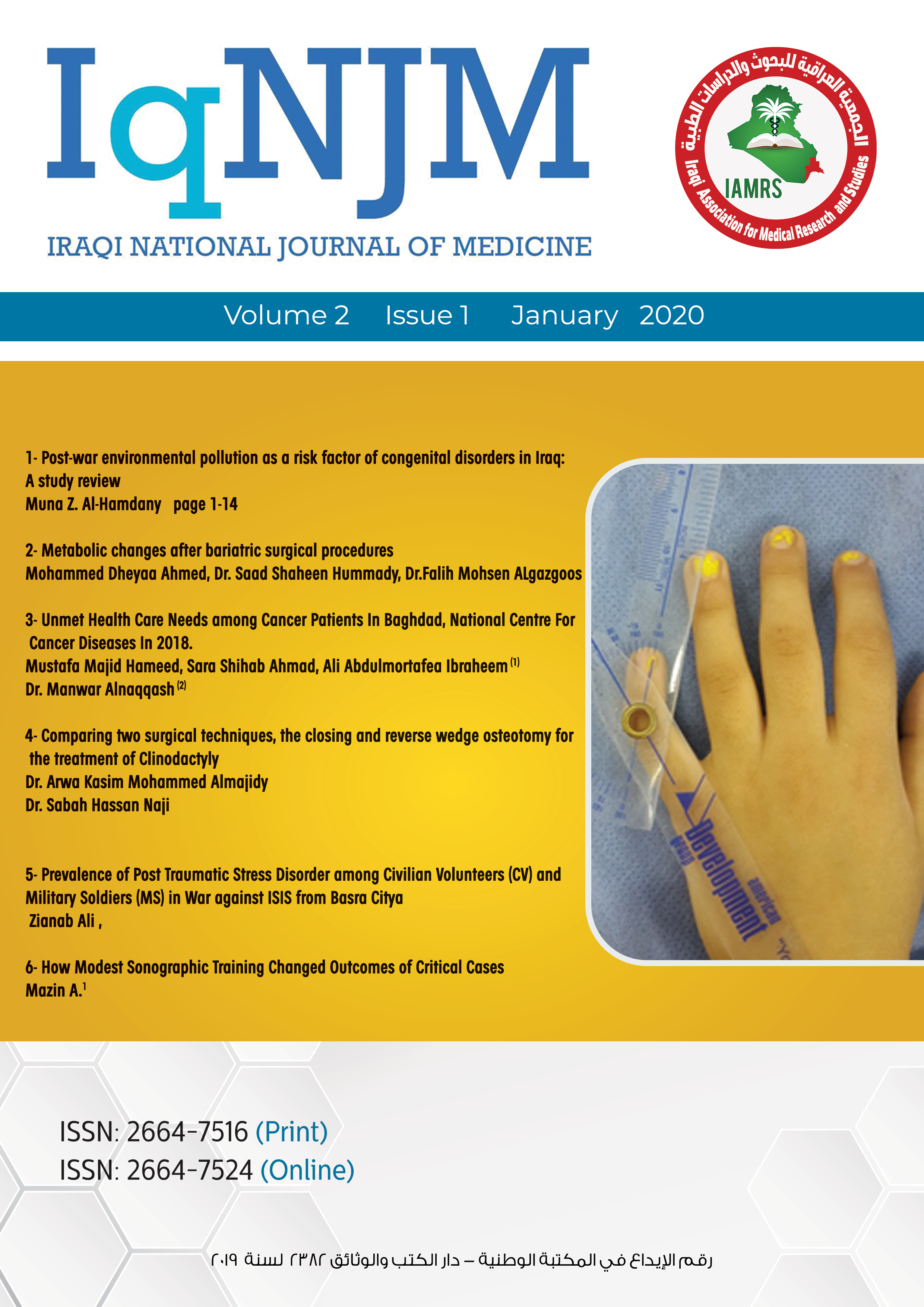How Modest Sonographic Training Changed Outcomes of Critical Cases letter to Editor
Main Article Content
Keywords
cretical care, ultrasound, sonogrophic training, basrah
Abstract
Most physicians consider sonography as a radiologist’s concern and still prefer to use clinical parameters or traditional tools to reach a prognosis or to make a delayed diagnosis if other and more sophisticated tools are not readily available.
Point of care sonography is nowadays spreading as a multi-utility tool in most specialties because of the failure of traditional tools and impracticality of using sophisticated tools. Ultrasound machines are nowadays cheaper and more portable besides being fast, being reusable, safe and promise a steep curve of learning.
I want here to share some of its applications made by junior anesthesia trainees. After only a modest learning period, they made a huge difference in the fate of critical cases or, at least, eased the managements or early prediction of potential problems.
In a case of gradual hypoxemia, which was intraoperatively non-responsive to usual measures, sonographic examination of the case showed pneumothorax in which clear clinical parameters usually appear too late and portable x-ray machines are unavailable in the operating theater.
In a case of postoperative hypoxemia, tachypnea and tachycardia with high D-dimer, the approach was towards treating it as pulmonary embolism. Sonography excluded pulmonary consolidation and pleural effusion but the diaphragm was seen to be significantly high, which lead to a diagnosis of collapse that caused the management line to be diverted.
For acute attack of chest pain and shock, resident ultrasonically excluded pericardial effusion and massive pulmonary embolism but there was also significant myocardial hypokinesia (early sign of cardiac ischemia) while troponin and ECG changes appeared only later.
During CPR, we couldn’t be sure whether tracheal tube was placed correctly as capnography failed here. Our examination showed signs of a double trachea (esophageal intubation).
In addition to routine use of ultrasound machines by some junior anesthetists for the following purposes:
- To preoperatively exclude deep vein thrombosis in immobile or other risky patients;
- To ensure empty stomach preoperatively;
- To diagnose an approaching shock by evaluating inferior vena cava collapsibility during breathing to guide fluid responsiveness in addition to following B-lines to avoid pulmonary fluid overload. In this way central venous pressure measurements with the concomitant risks were avoided;
- Peripherally inserted catheter (or cannula) with the aid of ultrasound has gradually replaced the central venous catheter placement and its risks. This has been applied even by some nurses who lacked experience with central catheterization to save many patients who had coagulopathy, long hospitalization, undergoing chemotherapy, suffering from shock, obesity or burn injuries;
- All this in addition to applying FAST (Focused Assessment with Sonography in Trauma) exam to seek for pathology.
Unfortunately, this tool is not yet in wide enough use among different clinical specialties. We do not have to be experts in the use of ultrasound machines to be able to make a difference in patients’ lives. Let us encourage the use of these machines.


